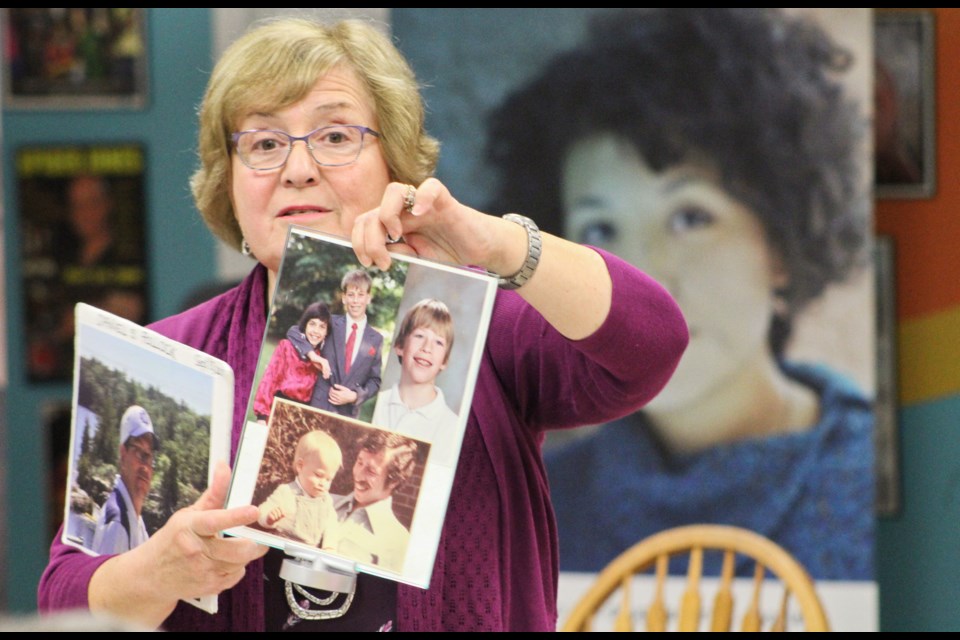Some people call it an opioid crisis. Melissa Hurst calls it a war.
“We are fighting a chemical war and we are losing to the drug dealers,” she said. “When are we going to say enough is enough, not in my backyard?”
Hurst was one of the speakers during the Opioids in Our Community discussion Thursday night at the Orillia Youth Centre.
Hurst, of Oro-Medonte, lost her 19-year-old son, Luke Kitson, to an accidental overdose on Mother’s Day in 2017.
At the end of the night, they said “goodnight” and “I love you” to one another.
“Those were our last words spoken,” Hurst recalled.
When she went to wake her son in the morning, she found him dead. Tests showed he had traces of marijuana, heroin and fentanyl in his system.
“Luke was not a drug addict. He experimented recreationally and he died as a result,” Hurst said, describing her son as adventurous, loyal, and someone who always fought for the underdog.
It was important for Hurst to share her story to the approximately 50 people in attendance Thursday.
“If, in speaking out, I can help save one life … then I have to speak out,” she said.
In 2017, nine people in Orillia died of opioid overdoses. Evelyn Pollock's son was one of them.
Like Hurst’s son, Daniel Pollock died of an unintentional fentanyl overdose, at the age of 43.
“Fentanyl caused his brain to stop sending messages to remind him to breathe,” Pollock said.
Her son was “fiercely independent, a risk taker.”
“It might sound like your kids,” she told the crowd.
Her point: It can happen to anyone.
Daniel struggled with addiction for years, but, like so many who have had fateful encounters with drugs, he didn’t seek out fentanyl. The small but powerful substance is an inexpensive way for producers to make other substances even more addictive.
As Const. Tara Murphy, of Orillia OPP’s Community Street Crime Unit, explained, four grains — the size of salt grains — of fentanyl are enough to cause an overdose.
“That’s why it’s so easy to not know what’s in there,” she said. “It’s a very, very dangerous game.”
Fentanyl is 40 times more powerful than heroin, and carfentanil is 100 times more potent than fentanyl, Murphy explained. It is odourless and tasteless, so users don’t even know it’s in the drugs they’re taking.
The audience also heard from Jenny Wylie, mental health team lead with the Couchiching Family Health Team, and Sharron Carson, youth addictions counsellor with the Canadian Mental Health Association. The two spoke about their role in working with youth.
For example, Wylie said it’s important to respect their privacy — despite parents often wanting to know the details of their conversations. If a counsellor reveals that information, the trusting relationship with the client can be lost.
The job of an addictions counsellor is to listen, she added, not judge. Some people might want to kick the habit, while others feel they truly enjoy it. That’s why workers take an objective approach to the discussion and treatment options.
Wylie assured audience members it is healthy to speak to their loved ones about drugs. Some people fear it will encourage drug use, she said, but added that is not the case; the point is to educate them about drugs and the associated risks.
“We can’t change the deaths, but, in the meantime, we can … be caring adults,” she said.
Claudia Swoboda-Geen, a public health nurse with the Simcoe Muskoka District Health Unit, encouraged people to carry the overdose-reversing medication naloxone with them. If someone has had a suspected overdose, the nasal spray could save that person’s life. Naloxone is available through the health unit and at most pharmacies in the region.
More information from the health unit about opioids can be found here.



